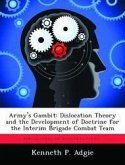The Army's transformation to the brigade combat team (BCT) as its primary combat employment unit has come at the cost of reduced organic firepower and armor under the modular force concept. As a result, greater emphasis and dependence will likely be placed upon fixed-wing fires in support of the BCT. Simultaneously, Air Force aircraft continue to experience reduced mission capable (MC) rates due to sustained combat operations and airframe fatigue. The Air Force is acquiring new tactical airframes while recapitalizing and retiring others, but at a projected rate less than a 1:1 replacement ratio. Presented in this thesis is an integrated force ratio model to quantify both Army requirements and Air Force capacity to support those requirements. A modified case study using Desert Storm provides a context for the practical application of this model in determining future force requirements for both services and to answer the primary research question: Can the Air Force provide sufficient support to the BCTs engaged in major combat operations (MCO)? Recommendations include re-evaluating Army modularity assumptions for non-organic joint fires support as well as a dedicated, combined approach between the Air Force and Army to jointly evaluate force structure and acquisition decisions.
Bitte wählen Sie Ihr Anliegen aus.
Rechnungen
Retourenschein anfordern
Bestellstatus
Storno









